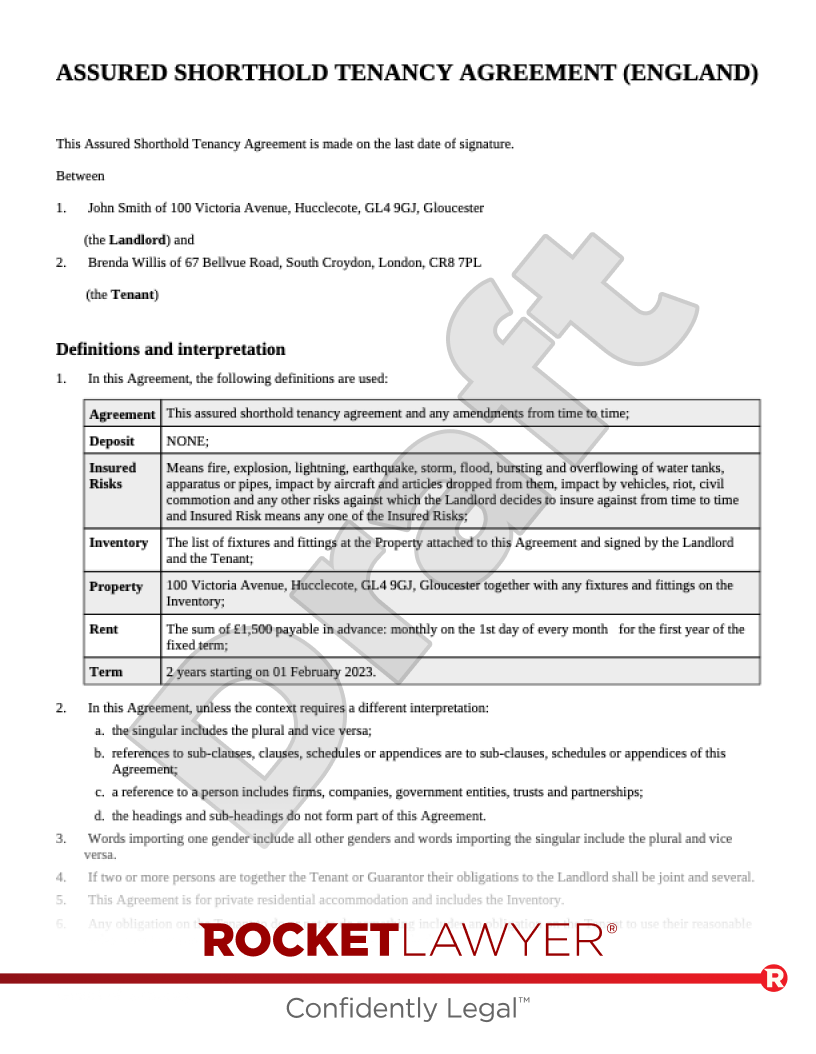Letting documents
It is important to use the correct document so that the tenant does not obtain rights in the property and so that you can easily remove the tenant if they do not pay the rent or breach any obligations in the agreement. If the wrong type of document is used, a tenant may obtain rights to remain at the property. As a tenant, you want to make sure you have the security of tenure you need and the landlord has obligations to maintain the property and not disturb you.
Choosing the right tenancy agreement is also important when seeking a mortgage, as mortgage contracts often contain a term that requires the homeowner to get the lender’s permission before renting out all or part of the property.
For more information on letting properties, read Renting out property in Scotland.
Private residential tenancies
All tenancies that started on or after 1 December 2017 in Scotland are private residential tenancies. Private residential tenancies give the tenant the exclusive right to use and occupy a house or flat. They are open-ended tenancies that will last until the tenant wishes to leave the property or until the landlord relies on one or more of the 18 grounds for eviction. For more information, read Grounds for eviction in Scotland.
Short assured tenancy
Where a tenant rents a property from a private landlord or letting agent, they are likely to have a short assured tenancy provided that:
- the tenancy started after the 2 January 1989
- the property is rented as a home
- it is the tenant’s only or main home
- the tenant received Form AT5 before the tenancy started, stating that the tenancy was a short assured tenancy
- the tenancy is for a duration of at least 6 months
To be a short assured tenant, a tenant does not need to rent the entire property; they can simply be renting part of the property (eg a room).
Where a tenant was a short assured tenant on 1 December 2017, their tenancy will continue as a short assured tenancy until the tenant or the landlord brings it to an end. Where the landlord offers the tenant a new tenancy, this will be a private residential tenancy.
A tenant and landlord may also come to an agreement to change the tenancy from a short assured tenancy to a private residential tenancy before the end of the original tenancy.
Assured tenancy
A tenant will likely have an assured tenancy where they rent from a private landlord or letting agent and:
- the tenancy started after the 2 January 1989
- the property is rented as a home
- it is the tenant’s only or main home
- the tenant did not received Form AT5 before the tenancy started, stating that the tenancy was a short assured tenancy
To be an assured tenant, a tenant does not need to rent the entire property; they can simply be renting part of the property (eg a room).
Where a tenant was an assured tenant on 1 December 2017, their tenancy will continue as an assured tenancy until the tenant or the landlord brings it to an end. Where the landlord offers the tenant a new tenancy, this will be a private residential tenancy.
A tenant and landlord may also come to an agreement to change the tenancy from an assured tenancy to a private residential tenancy before the end of the original tenancy.
Lodger agreement
A Lodger agreement gives a lodger the right to use a spare room in a property. In Scotland, lodgers have what is referred to as a ‘common law tenancy’. A common law tenancy arises if the occupier lives in the same property as the landlord but has exclusive possession of part of the property (eg they have their own bedroom).
Under a lodger agreement the owner will live at the property and the lodger is given use of a bedroom and has the right with the owner to use other areas in the property such as a bathroom, kitchen and garden.
The owner can end the lodger agreement if the lodger is late in paying the rent or breaches any obligations in the agreement by following the set procedure. For more information, read Evicting lodgers in Scotland.
As a landlord, you might not be able to enter into a lodger agreement if you are seeking a mortgage, as many lenders only accept shorthold tenancy agreements to grant a mortgage.
Holiday lets
Under a holiday letting agreement, the owner will not live at the property and the holidaymaker is given full use of the property for a set (short) period of time, usually between 1-3 weeks.
The holidaymaker does not get any right to stay in the property after the set period and the owner can obtain possession of the property by following the set procedure.
For more information, read Holiday lets.




